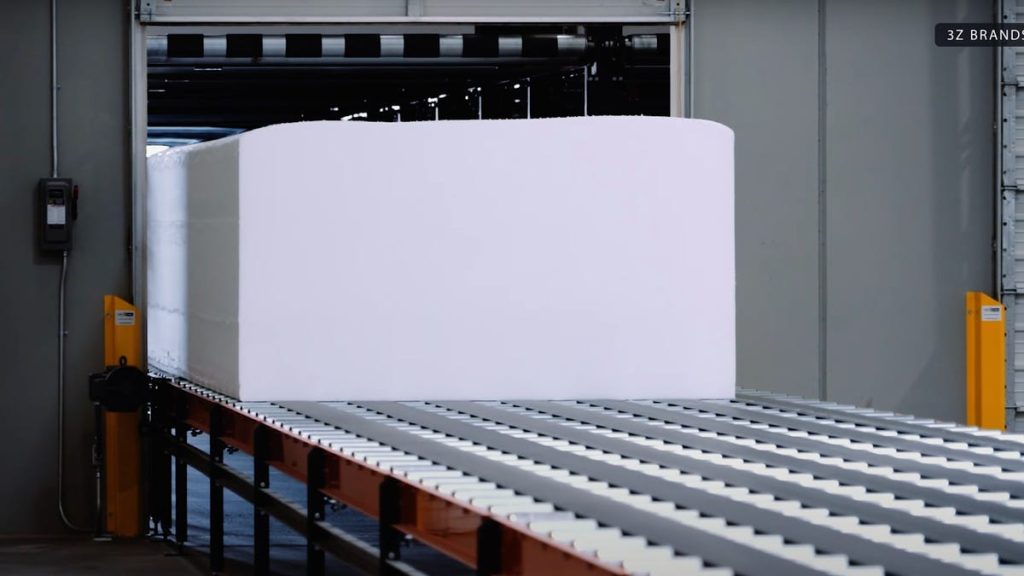The Science of Sleep: Understanding Mattress Foam and Its Impact on Health and Comfort
The quality of sleep significantly impacts overall health and well-being. A crucial factor contributing to restful sleep is the mattress, particularly the type of foam used in its construction. While some foams may contain harmful chemicals, many reputable brands prioritize non-toxic materials. This exploration delves into the world of mattress foams, examining their diverse types, manufacturing processes, and the importance of choosing safe and supportive options for optimal sleep.
Decoding Foam Varieties: From Memory Foam to Polyurethane and Beyond
Mattresses utilize a variety of foam types, each offering unique characteristics that cater to different sleep preferences and needs. Memory foam, renowned for its body-conforming properties, provides excellent pressure relief but can sometimes trap heat. Gel-infused memory foam addresses this issue by incorporating cooling gel particles to regulate temperature. Copper-infused foam boasts antimicrobial properties, while high-density foam offers robust support. Latex foam, derived from natural rubber, provides a responsive and buoyant feel. Polyurethane foam, a versatile and commonly used material, balances comfort and support while remaining more affordable than other foam types. Each foam type possesses distinct properties, influencing the mattress’s firmness, responsiveness, and overall sleep experience.
Inside the Foam Factory: A Behind-the-Scenes Look at Mattress Production
The creation of mattress foam is a fascinating process, often likened to baking a cake. Raw materials, carefully measured and combined, undergo a chemical reaction, causing the mixture to rise and expand. This liquid foam is then poured onto a conveyor belt, where it continues to rise and cure into a solid block. The color of the foam serves primarily as a visual aid for manufacturers to distinguish between different types and densities. Once cured, the foam blocks are precisely cut into layers, ready to be incorporated into various mattress models. Reputable manufacturers prioritize certifications such as CertiPUR-US, which guarantees the foam is free from harmful chemicals and meets stringent standards for content, emissions, and durability.
The 3Z Model: Innovating Foam Production and Mattress Design
3Z, a prominent mattress manufacturer, stands out for its in-house foam pouring process, granting them unparalleled control over the quality and composition of their materials. This vertical integration allows 3Z to create unique foam formulations tailored to the specific needs of their diverse mattress brands. By adjusting the density, composition, and structure of the foam, they achieve varied levels of firmness, support, and comfort, resulting in a distinct feel for each mattress model. This commitment to innovation and quality control underscores 3Z’s dedication to providing consumers with a superior sleep experience.
Prioritizing Safe and Sustainable Sleep: The Importance of CertiPUR-US Certification
Consumers seeking a healthy and environmentally conscious sleep solution should prioritize mattresses made with CertiPUR-US certified foam. This certification ensures the foam is free from ozone depleters, formaldehyde, heavy metals, and other harmful chemicals. It also signifies that the foam meets rigorous standards for content, emissions, and durability, assuring consumers of its safety and longevity. Choosing CertiPUR-US certified mattresses promotes a healthier sleep environment and contributes to a more sustainable future.
Making Informed Mattress Choices: Matching Foam Type to Sleep Preferences
Selecting the right mattress is a personal journey, dependent on individual sleep preferences and needs. Hot sleepers may benefit from gel memory foam or latex, while those seeking pressure relief might prefer traditional memory foam. Individuals who prefer a more responsive and buoyant feel may opt for latex or polyurethane foam. Understanding the characteristics of different foam types empowers consumers to make informed choices and invest in a mattress that promotes restful and restorative sleep. By prioritizing quality materials and certifications, individuals can create a sleep sanctuary that supports their overall health and well-being.










